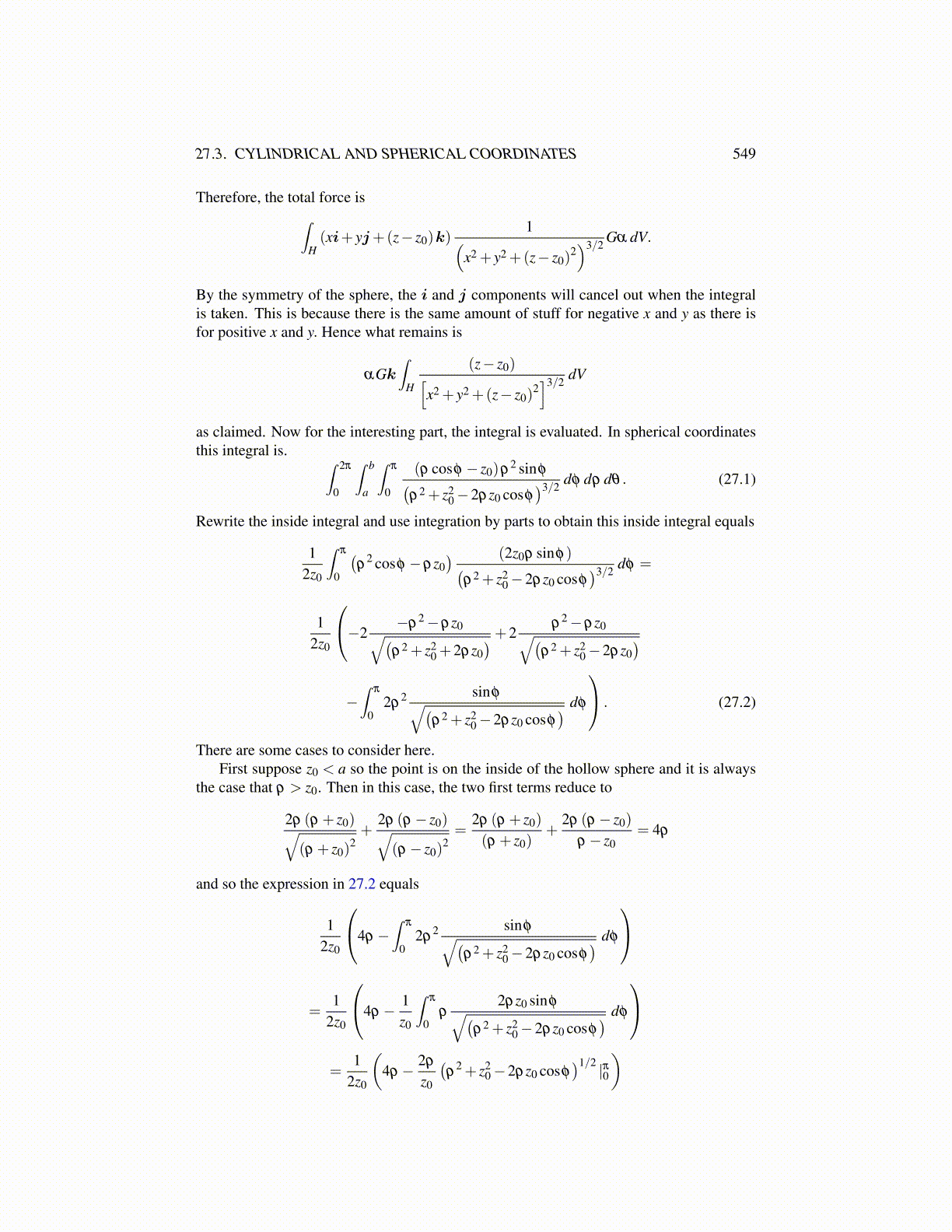
27.5. THE GENERAL PROCEDURE 549
where u∈U an open set in R3and corresponding to such a u∈U there exists a unique point(x,y,z)∈V as above. Suppose at the point u0 ∈U , there is an infinitesimal box having sidesdu1,du2,du3. Then this little box would correspond to something in V . What? Considerthe mapping from U to V defined by
x=
xyz
=
f1 (u1,u2,u3)f2 (u1,u2,u3)f3 (u1,u2,u3)
= f (u) (27.4)
which takes a point u in U and sends it to the point in V which is identified as (x,y,z)T ≡x.What happens to a point of the infinitesimal box? Such a point is of the form
(u01 + s1du1,u02 + s2 du2,u03 + s3du3) ,
where si ≥ 0 and ∑i si ≤ 1. Also, from the definition of the derivative,
f (u10 + s1du1,u20 + s2 du2,u30 + s3du3)−f (u01,u02,u03) =
Df (u10,u20,u30)
s1du1s2du2s3du3
+o
s1du1s2du2s3du3
where the last term may be taken equal to 0 since the vector (s1du1,s2du2,s3du3)
T isinfinitesimal, meaning nothing precise, but conveying the idea that it is surpassingly small.Therefore, a point of this infinitesimal box is sent to the vector
=Df(u10,u20,u30)︷ ︸︸ ︷(∂x(u0)
∂u1,
∂x(u0)
∂u2,
∂x(u0)
∂u3
) s1du1s2du2s3du3
=
s1∂x(u0)
∂u1du1 + s2
∂x(u0)
∂u2du2 + s3
∂x(u0)
∂u3du3,
a point of the infinitesimal parallelepiped determined by the vectors{∂x(u10,u20,u30)
∂u1du1,
∂x(u10,u20,u30)
∂u2du2,
∂x(u10,u20,u30)
∂u3du3
}.
The situation is no different for general coordinate systems in any dimension. In gen-eral, x= f (u) where u∈U , a subset of Rp and x is a point in V , a subset of p dimensionalspace. Thus, letting the Cartesian coordinates of x be given by x = (x1, · · · ,xp)
T , each xibeing a function of u, an infinitesimal box located at u0 corresponds to an infinitesimalparallelepiped located at f (u0) which is determined by the p vectors
{∂x(u0)
∂uidui
}p
i=1.
From Definition 27.5.1, the volume of this infinitesimal parallelepiped located at f (u0) isgiven by (
det(
∂x(u0)
∂uidui ·
∂x(u0)
∂u jdu j
))1/2
(27.5)
in which there is no sum on the repeated index. As pointed out above, after Definition27.5.1, if there are p vectors in Rp,
{v1, · · · ,vp
},
det(vi ·v j)1/2 =
∣∣det(v1, · · · ,vp)∣∣ (27.6)